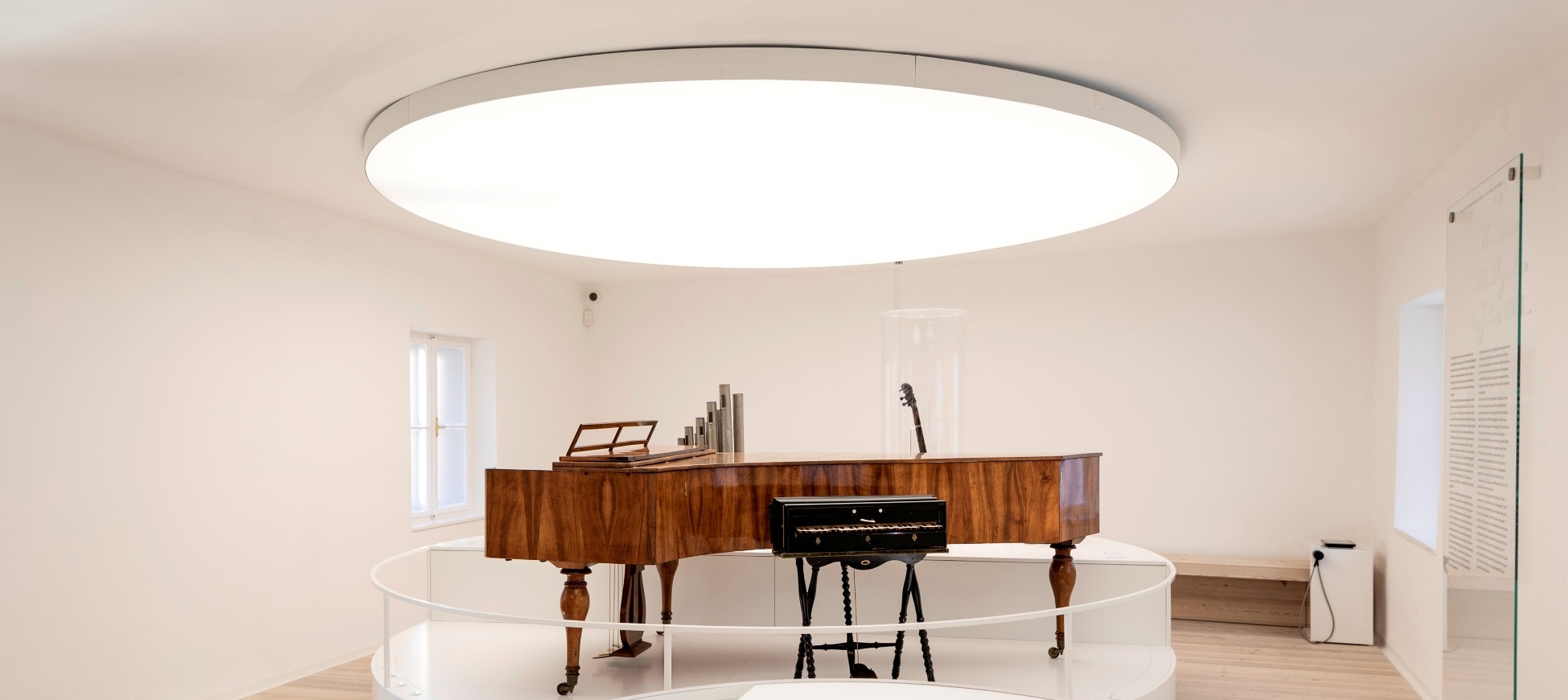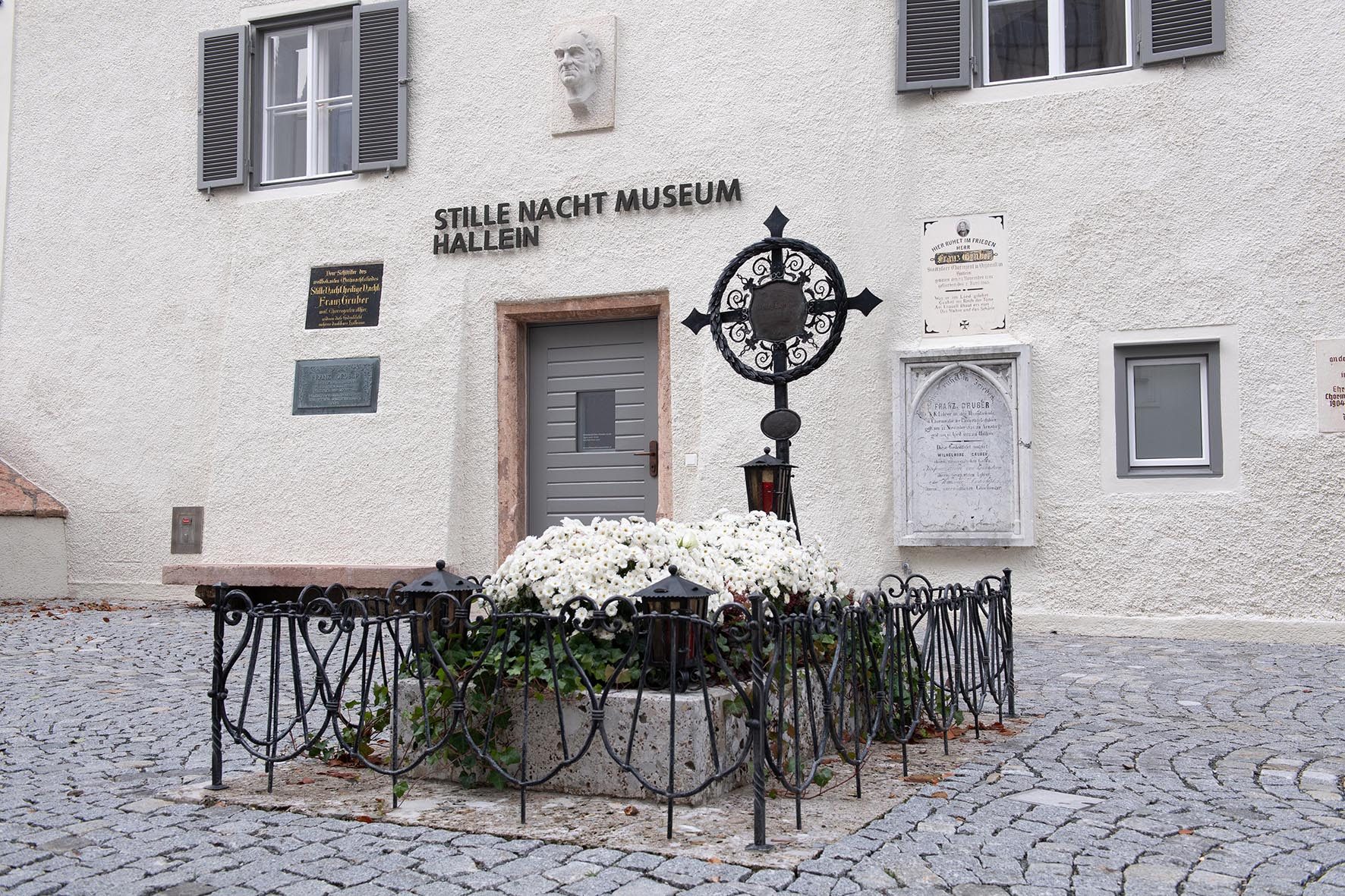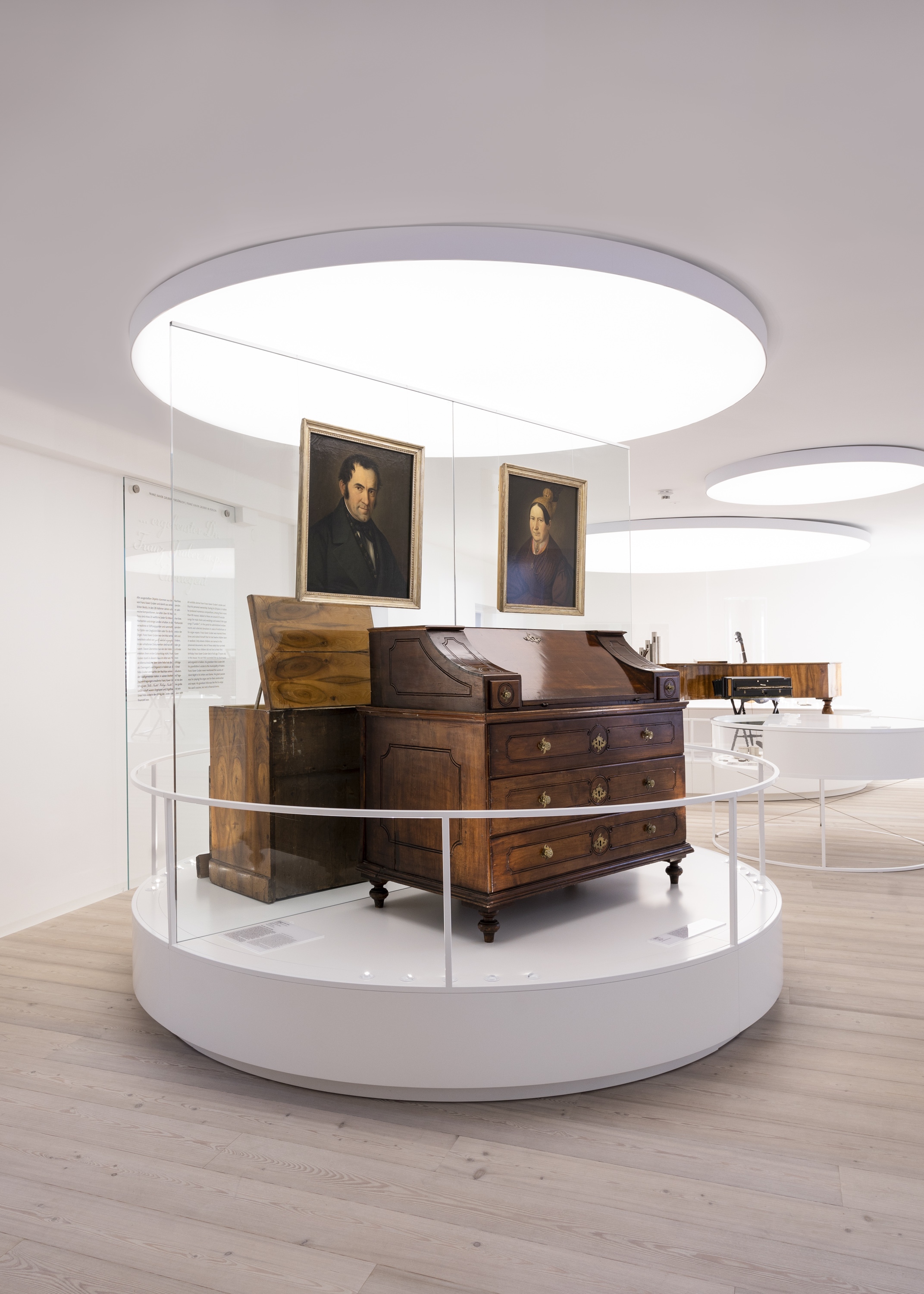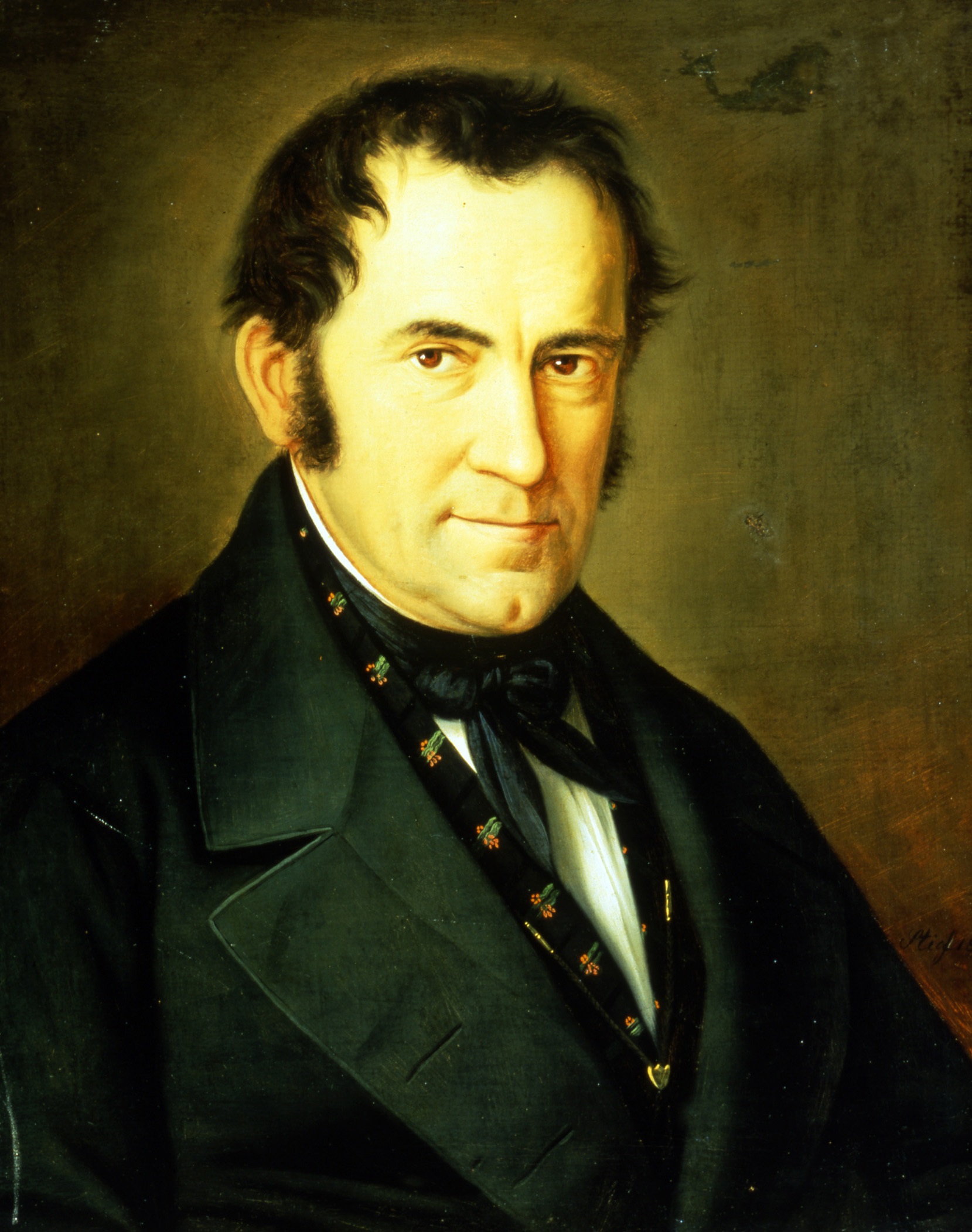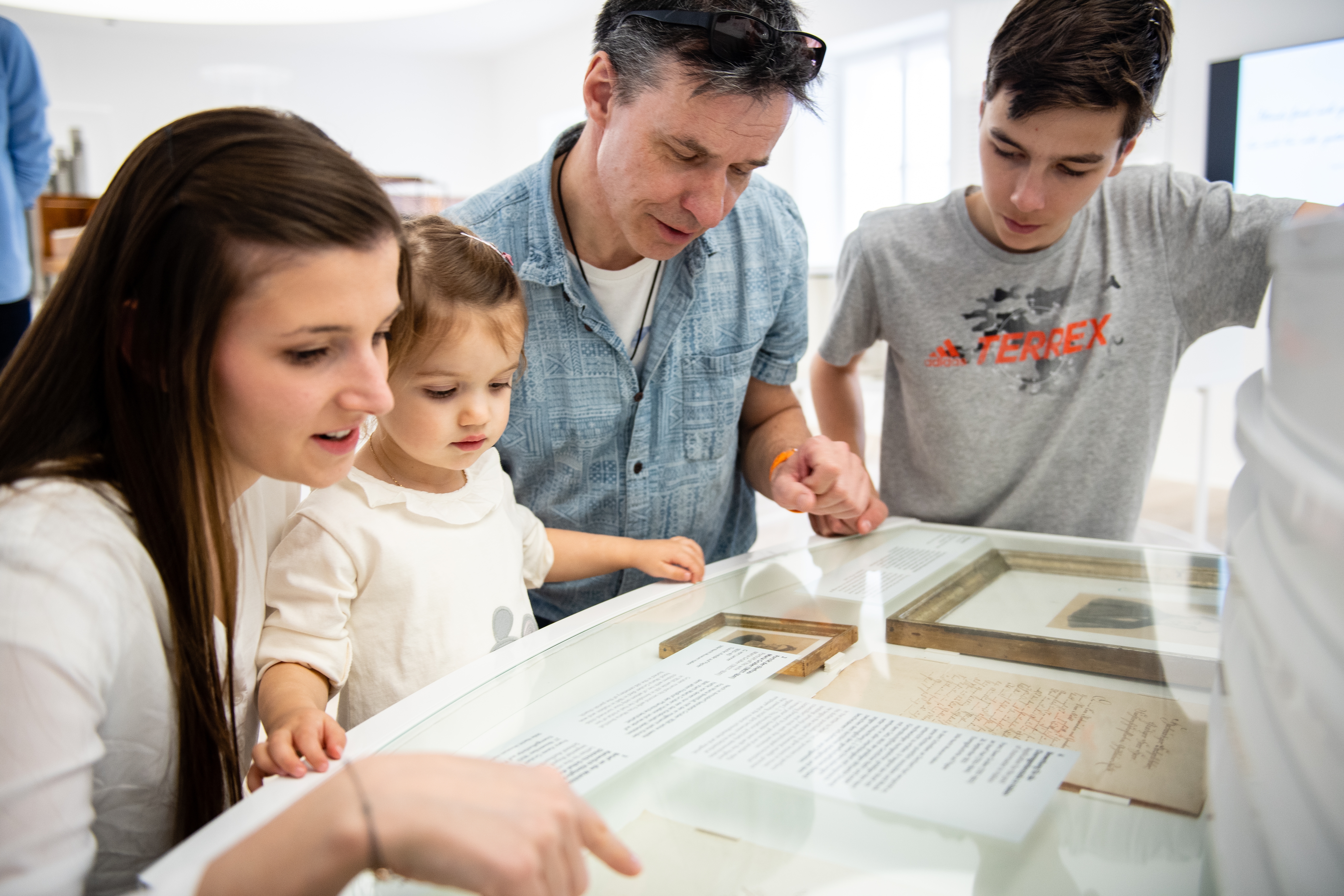Notable People
Franz Xaver Gruber
Franz Xaver Gruber lived in Hallein with his family for 28 years, from 1835 to 1863, and devoted himself particularly to music. His appointment as choir regent, chorist and organist of the parish church of Hallein was made in 1835. Gruber zealously pushed ahead with the training of the church choir. During his life he also took part in musical events outside of Hallein. He created an extensive musical oeuvre. Franz Xaver Gruber died on June 7, 1863 at the age of 76 in Hallein and is buried here. His second-born son, Felix, succeeded him as Hallein choir regent.
On December 30th, 1854, Franz Xaver Gruber wrote his “Authentic Account” in Hallein, in which he attests to the authorship and first performance of “Silent Night! Holy Night!". It is located in the Silent Night Archive in Hallein. A letter from the royal Prussian court orchestra in Berlin gave the impetus for the "authentic occasion". This asked the choir inspector of St. Peter’s Abbey, Father Ambros Prennsteiner, whether the original copy of the song “Silent Night! Holy Night! ” by Michael Haydn was to be found in the archive. Franz Xaver Gruber's son Felix was a choirboy at St. Peter’s at the time and Father Ambros asked him if he knew the song. Felix named his father Franz Xaver Gruber as a composer. In his "Authentic Account", which he then wrote, he reports that Joseph Mohr came to him in 1818 with the text and wrote the melody.
Museums, memorials, events
Franz Xaver Gruber’s Grave
Silent Night Archive, Hallein
Silent Night Museum, Hallein
Joseph Mohr’s Guitar
Local Community - Hallein City
The saltworks town of Hallein, first mentioned as a town in 1230, has a salt carrier with a torch as its coat of arms. The salt deposits in the nearby Dürrnberg were for centuries the most profitable branch of the archbishopric's economy for the Salzburg prince archbishops. The Hallein salt mine is one of the oldest mines in the world. The settlement of the Dürrnberg by the Celts is also explained by this fact. Hallein was the early example of an industrial city that Franz Schubert described in 1820 as "sooty and dirty". The decline in salt production was followed by unemployment and poverty, only with the settlement of new industries did the situation improve again.
Today the saltworks city, celtic city, industrial city, school city and cultural city Hallein is the district capital of the Tennengau region and the second largest city in the state of Salzburg. Hallein has a well-preserved old town with the typical Salzach-Inn architectural style. In addition to the Silent Night Museum, the top sights include the Hallein Celtic Museum and the Salzwelten Salzburg (Hallein salt mine).
